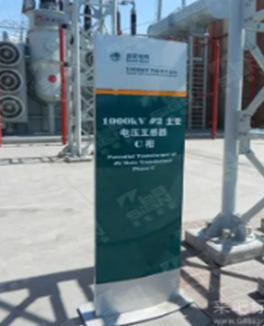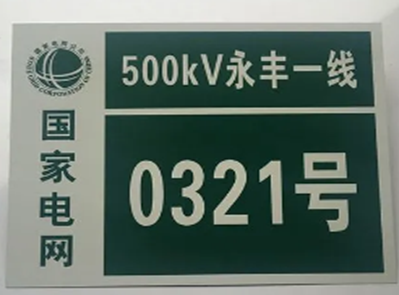At the beginning of 2008, the rare snow disaster in a hundred years hit most parts of southern China, severely damaging power grid facilities. The rare snow disaster broke high-voltage lines and collapsed power towers, causing power supply interruption. Taking Hunan power grid seriously affected by the disaster as an example, one of the three so kV lines (including tie lines) in the province was shut down, accounting for 3% of the total so kV lines. There are 34 20kV277 lines out of service in the province, accounting for 12% of the total number of 2OkV lines; There is one 220 kV substation (including power plant booster station) in the whole province, with nine fully stopped, accounting for 8% of the total number of 220 kV substations. After the snow disaster broke out, all regions made great efforts to repair, but the recovery was slow, exposing the weakness and obvious deficiency of China’s power grid construction. The key to the problem is that the monitoring work of relevant departments on power grids at all levels is not in place, and the specific relevant information of power facilities cannot be timely and accurately grasped.
At present, it is necessary to establish a complete electric power monitoring system. First of all, an information carrier is needed to record the relevant information of power facilities to be monitored. At present, the technology of barcode is very mature, and its application is ubiquitous. The traditional commodity packaging and logistics management based on barcode has made great contributions to human beings. However, with the popularization of the Internet in the world, the degree of automation of management is getting higher and higher. Some characteristics of barcode can no longer meet the requirements of highly automated and intelligent management in the modern network era, and an intelligent electronic label is needed to replace it, The characteristics of RFID tags can just replace the traditional barcode technology. The emergence of RFID tags will provide a new idea for the future power grid monitoring system.

In fact, RFID tag is not a technology that only exists now. This technology actually appeared in the 1980s and has been applied in some specific fields, such as factory automation production line, goods management in warehouse or station ticket checking. However, this technology is becoming more and more mature, smaller and smaller in form, and lower and lower in cost, so it is more and more suitable as an information carrier. The restoration of power grids after the snow disaster is very difficult, especially in Jiangxi and Zhejiang. The reason for the difficulty is that in the early stage of power grid construction, in order to save energy consumption, some towers of Jiangxi and Zhejiang main grids are located in mountainous areas, where the temperature is low, the wind is strong, and tower collapse is most serious. Moreover, due to the local geographical and natural conditions, the relevant information of damaged power poles and towers cannot be accurately mastered. Therefore, the post disaster repair plan can not be put forward in time, and the rush repair time is delayed. The power monitoring system using RFID tag identification technology can help solve this substantive problem.
RFID tags are adsorbed on power towers. From the first day of tower construction to its scrapping, RFID tags, like ID cards, record all its information, including number, completion time, daily maintenance, repair process and times. In addition, they can record the relevant geographic location and longitude and latitude coordinates of the tower, so as to build a GPS based power network distribution map. Helicopter with RFID terminal interrogation read-write device can read the status information of the tower from the air to judge whether the tower is damaged, rusted, and its detailed address. The terminal antenna is installed on the belly of the helicopter and led down.
The advantages of RFID electronic label technology over barcode (Bacrde) e technology are:
1) No light source is needed, and data can even be read through external materials; 2) Long service life, able to work in harsh environments; 3) Read farther; 4) It can write people and access data, with fast writing time; 5) The content of the tag can be changed dynamically; 6) Capable of processing multiple labels at the same time; 7) The data access of the tag is password protected, with higher security; 8) The object attached to the RFID tag can be tracked and located.
The reader mainly includes radio transceiver antenna, data communication and corresponding control circuit. The electronic tag mainly includes radio wave receiving and transmitting circuit, power supply, and data storage circuit. The equipment for data processing and storage is often a PC, on which corresponding system software and database management software are generally installed.

After knowing some functions of RFID tags, let’s talk about the practical application of RFID tags in the system.
When the pole and tower are just built, some fixed attributes of the pole and tower are written into the label in advance, such as the completion time, pole and tower number, etc. At the same time, GPS positioning device can be used to record the longitude and latitude information of the pole and tower, and these information can also be written into the label as fixed attributes. After each maintenance of the tower, the staff shall carry a hand-held reader (usually a handheld computer embedded with a read-write module, the composition principle is basically the same as that of the reader) to write the relevant maintenance information into the tag, including the longitude and latitude position of the tower, current status, existing problems and other information. Check the distribution of poles and towers according to the GPS based power network distribution map, so as to quickly determine the geographical location of the problem poles and towers. Provide effective repair plan for emergency repair personnel. Helicopters are assigned to patrol the towers on schedule. Especially when the land conditions are very bad after major disasters such as snow disaster, aerial monitoring is an inevitable measure. The readers on the aircraft identify the towers. After obtaining the specific information of the power line towers, they return to the normal readers to connect with the computer, and the read tag information is transmitted to the computer management center for further processing. In order to make the information more intuitive, we can establish a power network distribution map based on GPS on the management platform, integrating the visual effect of the map, geographic information of power facilities and database operation. After the longitude and latitude information in the electronic tag is recorded into the computer, the specific geographic location of the tower is directly displayed on the distribution map through database search, and a complete monitoring system is achieved with the help of live photos.
So what are the problems we need to deal with when using rfid tags and related systems?
1. The standards of RFID tags are not uniform. Electronic tags are divided into high frequency, ultra-high frequency and other frequency bands, and there is a difference between passive and active; 2. Communication. In fact, the metal parts, power towers and cables of the helicopter will interfere with the tag and the reader’s antenna to some extent, or even shield the signal, which will directly affect the normal communication between the reader and the tag. In addition, the high error rate is also an aspect of RFID technology that needs to be improved. These all need to be further improved, but with the increasing popularity of RFID electronic tags, RFID technology will gradually solve these problems, which is the only way for any new technology.
In the future power monitoring system, the excellent characteristics and intelligent management of RFID electronic tags will help people grasp all kinds of relevant information in a more timely and prepared manner. Once the power facilities are damaged, it will guide the correct maintenance plan to save valuable repair time. So as to improve the ability of the whole power grid to deal with various natural disasters and make the power grid stronger.






